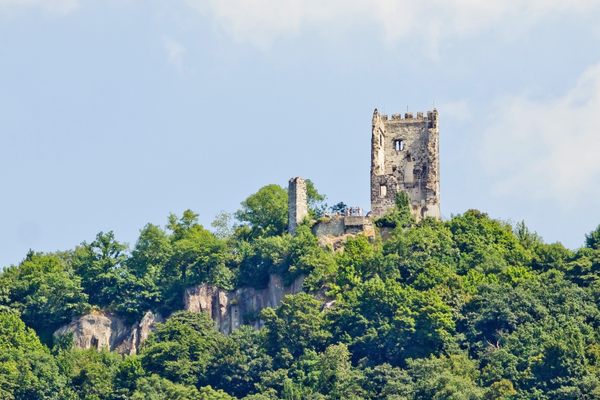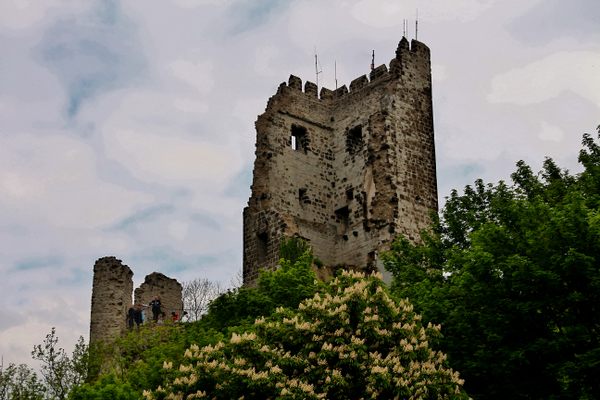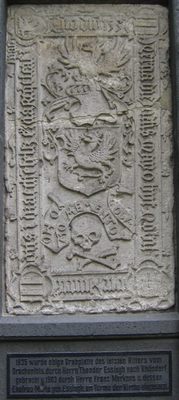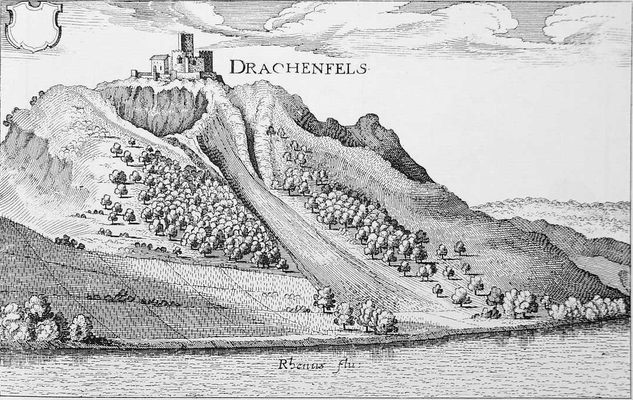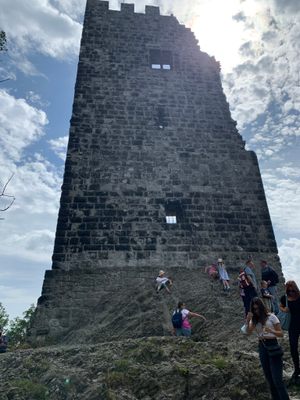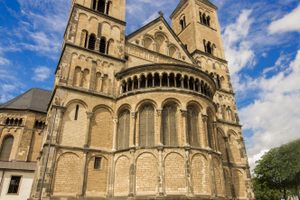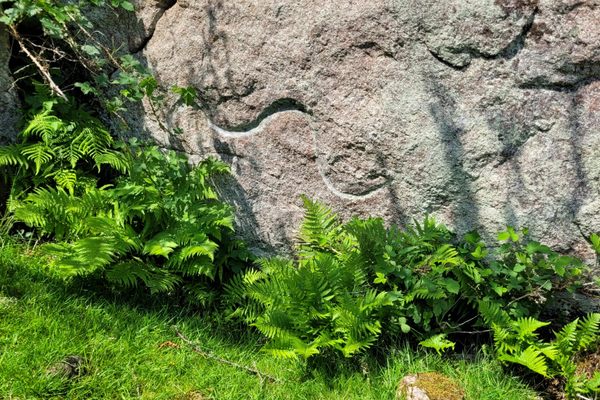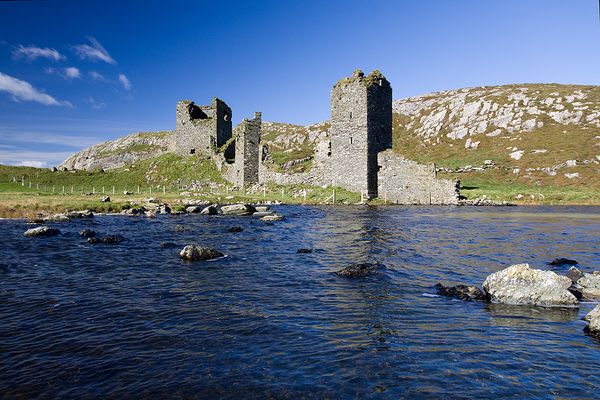About
The Drachenfels, a thousand-foot hill in Germany, is a site surrounded by legends. At the summit of the hill lie the ruins of a 12th century castle known as Burg Drachenfels.
Literally meaning "Dragon's Rock," the Drachenfels abounds with dragon-related legends. One claims that a dragon lived here, but a Christian maiden's prayers made it fly away and never return. In another, a different dragon is said to have been defeated by the use of gunpowder. According to another, Fafnir, the son of a dwarf king was turned into a dragon by a cursed ring and later slain by the mythical hero Sigurd. Fafnir lived in a cave full of treasure, which legend holds was located in the Drachenfels.
It has been suggested that the "dragon's rock" originally referred to the trachyte ore extracted from the hill. The Drachenfels has been known for its trachyte quarries since the Roman times. Around the year 1000, stones quarried from the hill were used to construct the St. Maria im Kapitol church in Cologne.
In 1138, Archbishop Arnold I of Cologne started the construction of Burg Drachenfels, which was purchased and completed in 1149 by Gerhard von Are, provost of the St. Cassius Abbey in Bonn. It was originally intended to defend the city of Cologne from potential invaders. In the early 17th century, during the Thirty Years' War, the Swedes attacked the hilltop castle and heavily damaged it. The Lord of Drachenfels, who lived at Gudenau Castle, had no interest in restoring it despite having been offered funds. Having lost its strategic importance, the castle was never rebuilt and remains in ruins to this day.
Following the Napoleonic Wars, the Drachenfels and its castle ruins were visited by the likes of Lord Byron and often became a subject of poetry. This invigorated the tourism in the area, especially after the Drachenfels Railway made access easier in 1883. Around this time, a gorgeous neogothic castle called Schloss Drachenburg was constructed on another side of the hill. Because of its popularity among Dutch tourists, the Drachenfels has earned the humorous nickname of "the Highest Hill in Holland."
Related Tags
Published
May 28, 2020
